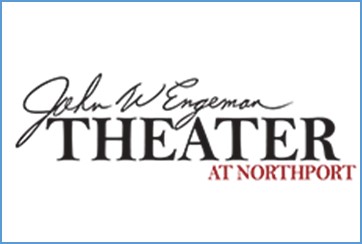Report: First-Aid Squad Needs Staff, Policy Changes
/By Andrew Wroblewski
awroblewski@longislandergroup.com
The all-volunteer Huntington Community First Aid Squad should hire staff and alter longstanding policies to better keep up with emergency response calls during peak hours, a new study of the squad’s operations conducted at the request of the Town of Huntington recommends.
The study, conducted by Texas-based Medic Health and submitted to Huntington Sept. 29, was approved by the town in June 2014 after the town’s five fire departments reported increases in “mutual aid requests” from HCFAS to neighboring fire departments and ambulance squads from the beginning of 2013 and into 2014.
The squad -- which consists of 283 volunteers -- responded to 5,596 calls in 2014, according to its website. Medic Health found that HCFAS requested mutual aid 41 times from January to May of this year. By comparison, fire departments adjacent to HCFAS made 23 such requests, the report said.
There is no nationwide response time expectation, the report said, but the nonprofit Commission of Accreditation of Ambulance Services has established a standard of 8:59 for EMS response to life-threatening calls.
In 2014, the report found, HCFAS had an ambulance on-scene within 8 minutes of receiving a call 62 percent of the time. HCFAS was on-scene within 10 minutes of a call 76 percent of the time, within 15 minutes of a call 89 percent of the time, and more than 15 minutes after a call 11 percent of the time.
The squad aims to staff a minimum of two on-duty ambulance crews at its 2 Railroad St. station 24 hours a day, the report said. HCFAS was founded in 1967 and follows a recruitment, orientation and on-boarding process that is “steeped in tradition,” requiring considerable investments of time by potential members before the squad may accept them.
“Once accepted, members are required to become versatile in a number of roles within the organization” rather than tailoring to the squad’s needs, the report said. “For example, all members must go through dispatch training regardless as to whether they intend to fulfill the role of dispatcher.”
Of the accepted members, the study found that “a number” of them choose not to commit to regularly scheduled shifts and therefore day captains must fill shifts by contacting members to see if they’re available.
This process appears to be particularly stressful during Friday mornings, afternoons and nights, Saturday afternoons and mornings, and Sunday nights, when the study found HCFAS member commitments were typically only sufficient to staff one “or fewer” ambulances.
If calls exceed the number of available ambulances, a squad dispatcher alerts members of the need and those members can then respond to fill the need.
“When this occurs, the response time of the ambulance may be delayed as a member must first travel to the station prior to responding to the patient’s bedside,” the report said.
According to the report, of the 283 HCFAS members, 68 percent live within the squad’s response district -- which spans Lloyd Harbor and Lloyd Neck to the north and Melville to the south and from the Nassau/Suffolk border and Cold Spring Harbor to the west to Greenlawn and Dix Hills to the east. Of the squad’s remaining members, 24 percent live within the Town of Huntington and 9 percent live outside of it.
Medic Health lists several recommendations for both HCFAS and the town to consider.
Most notably, the consultant recommends HCFAS consider adding a third ambulance during peak patterns of demand; restructure its recruitment, onboarding and orientation process to reduce the amount of time it takes for a prospective member to become a contributor; and “employ dedicated staff” to provide coverage when there aren’t enough volunteers available.
As for Huntington, Medic Health recommends the town mandate monthly performance reports from HCFAS and establish response time expectations for the squad.
“There are some recommendations that the town certainly hopes the squad will implement,” Huntington spokesman A.J. Carter said Thursday. “We’ll work with the squad to help implement them.”
The release of the report comes at a time when the town is proposing cuts to the squad’s funding, along with those of other special districts, and has asked the state comptroller to take a look into the squad’s books. Supervisor Frank Petrone has said the squad could dip into its reserves to make up for the cuts, as well as adopt a medical-billing system.
HCFAS Vice President Alyssa Axelrod said the squad had not yet seen the report as of Thursday afternoon, but it planned to meet and discuss it that night.
As an overall response to the study, Axelrod said in an emailed statement that the squad is “very appreciative” of the review and analysis.
On the topic of hiring paid personnel, Axelrod added, “Just as other volunteer agencies have done, HCFAS has discussed the matter of hiring paid personnel to assist our volunteers. We are still very much engaged in this discussion.”





